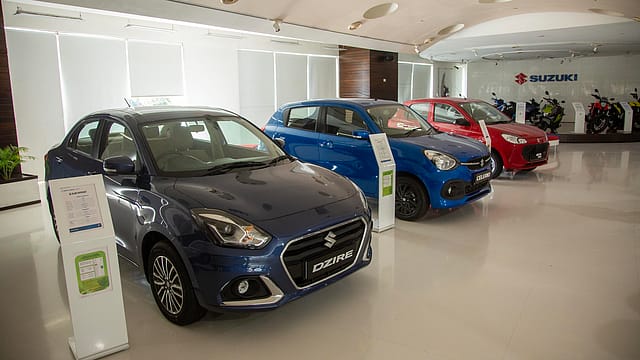Can GST 2.0 give longevity to demand in the automobile sector?
ADVERTISEMENT

When the Society of Indian Automobile Manufacturers (SIAM), the apex body of the automobile industry in India, reported the sector's second quarter sales performance, the impact of the GST rationalisation—which came into effect on September 22—was palpable as the passenger vehicles industry lodged its highest sales figures in September.
The September sales figures, which showed a year-on-year growth of 4.4%, propelled the industry to show signs of recovery towards the end of the second quarter. However, what was telling was that utility vehicles—the sub-segment that dominates the passenger vehicles market, accounting for two-thirds of total sales—posted a decline of 2.1% in the second quarter. Sales of passenger cars, on the other hand, were relatively flat.
The sales of passenger cars, especially those in the entry-level segment, stood to gain the most from the GST reforms. This was visible during Maruti Suzuki’s monthly sales call, where bookings for small cars increased by 50% YoY, and bookings beyond the 100 cities doubled. This propelled Maruti Suzuki—which is the largest maker of passenger vehicles by volume—to post its highest monthly retail dispatch in a decade of 165,000 units, and enquiries crossed 700,000. It has also received 100,000 bookings for small cars.
December 2025
The annual Fortune 500 India list, the definitive compendium of corporate performance, is out. This year, the cumulative revenue of the Fortune 500 India companies has breached $2 trillion for the first time. Plus, find out which are the Best B-schools in India.
According to Puneet Gupta, director, S&P Global, India and ASEAN, the majority of those flocking to auto dealerships are fence-sitters, who hitherto could not afford to buy a car, or those who did not have sufficient downpayment to buy a car. “Be it first-time car buyers or replacement buyers, the fence-sitters are those kinds of buyers who would have immediately jumped on the opportunity to buy a car,” he says.
However, the question that now arises is whether the GST reforms would serve as a short-term catalyst to demand or whether they would give longevity to it. SIAM, in its outlook, believes that the extended festive and wedding season will sustain growth momentum through the third quarter, which would reinforce positive sentiment across all vehicle categories.
Beyond the third quarter, SIAM says that the overall outlook for the rest of the financial year remains encouraging, with the automotive sector expected to close the current fiscal on a positive growth trajectory. Gupta, on the other hand, believes that the GST reforms will stimulate demand in the automobile industry until the CAFE 3 norms are introduced, after which it will depend on the sub-segments. “The carmakers will take some time to increase the price, which will not happen this year, because of the anti-profiteering law,” tells Gupta. Still, it would take time for carmakers to increase the price to the extent that it neutralises the price reduction by the GST reforms, which, on average, is 10%. CAFE, Or Corporate Average Fuel Efficiency standards for 2027–2032, tighten carbon emission targets for passenger vehicles while offering relief for small petrol cars and incentives for electric and hybrid vehicles.
According to Gupta, any major catalyst, such as the GST reforms or the relief given in income tax—which was announced earlier this year in the Budget—is expected to drive growth for the first five to six months. After this, momentum is built, which drives the industry for the next six months. “The industry then targets the next set of fence-sitters,” he said.
